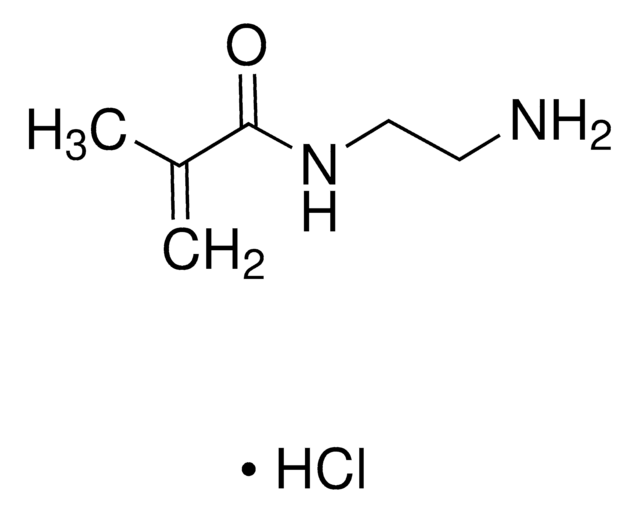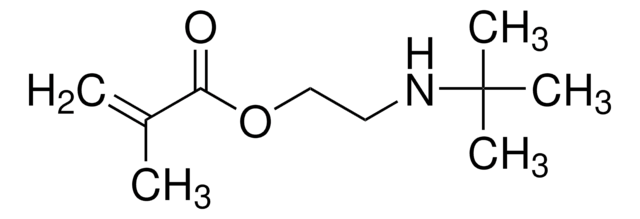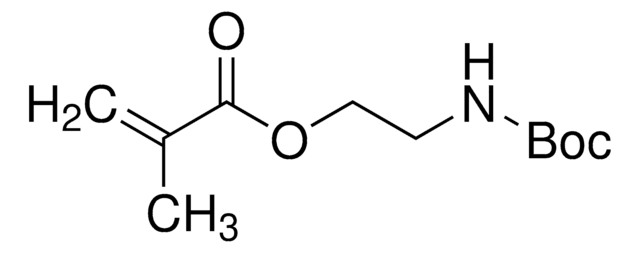516155
2-Aminoethyl methacrylate hydrochloride
contains ~500 ppm phenothiazine as stabilizer, 90%
Synonym(s):
2-Aminoethyl 2-methylacrylate hydrochloride, 2-Propenoic acid, 2-methyl-, 2-aminoethyl ester, hydrochloride (1:1) (ACI)
About This Item
Recommended Products
Quality Level
Assay
90%
contains
~500 ppm phenothiazine as stabilizer
mp
102-110 °C (lit.)
storage temp.
2-8°C
SMILES string
Cl.CC(=C)C(=O)OCCN
InChI
1S/C6H11NO2.ClH/c1-5(2)6(8)9-4-3-7;/h1,3-4,7H2,2H3;1H
InChI key
XSHISXQEKIKSGC-UHFFFAOYSA-N
Looking for similar products? Visit Product Comparison Guide
Related Categories
General description
Application
- Homo and copolymer brushes of AMA, which can be used to tune the electrochemical properties of silicon wafers.
- Poly(3-hydroxybutyrate) based polyurethane/urea composite scaffolds for tissue engineering applications.
- Antimicrobial bacterial cellulose/poly (AMA) nanocomposites. Polymer incorporation imparts mechanical properties and antimicrobial activity to bacterial cellulose membranes.
Signal Word
Warning
Hazard Statements
Precautionary Statements
Hazard Classifications
Eye Irrit. 2 - Skin Irrit. 2
Storage Class Code
11 - Combustible Solids
WGK
WGK 1
Flash Point(F)
Not applicable
Flash Point(C)
Not applicable
Personal Protective Equipment
Choose from one of the most recent versions:
Already Own This Product?
Find documentation for the products that you have recently purchased in the Document Library.
Customers Also Viewed
Our team of scientists has experience in all areas of research including Life Science, Material Science, Chemical Synthesis, Chromatography, Analytical and many others.
Contact Technical Service

![N-[3-(Dimethylamino)propyl]methacrylamide 99%, contains MEHQ as inhibitor](/deepweb/assets/sigmaaldrich/product/structures/295/145/6b4aae15-7cb5-4b7b-9c06-8e6d24e50951/640/6b4aae15-7cb5-4b7b-9c06-8e6d24e50951.png)









![[2-(Methacryloyloxy)ethyl]trimethylammonium chloride solution 75 wt. % in H2O](/deepweb/assets/sigmaaldrich/product/structures/316/612/66b0f4cf-d060-427d-b4f5-e8fab3e5cffe/640/66b0f4cf-d060-427d-b4f5-e8fab3e5cffe.png)


